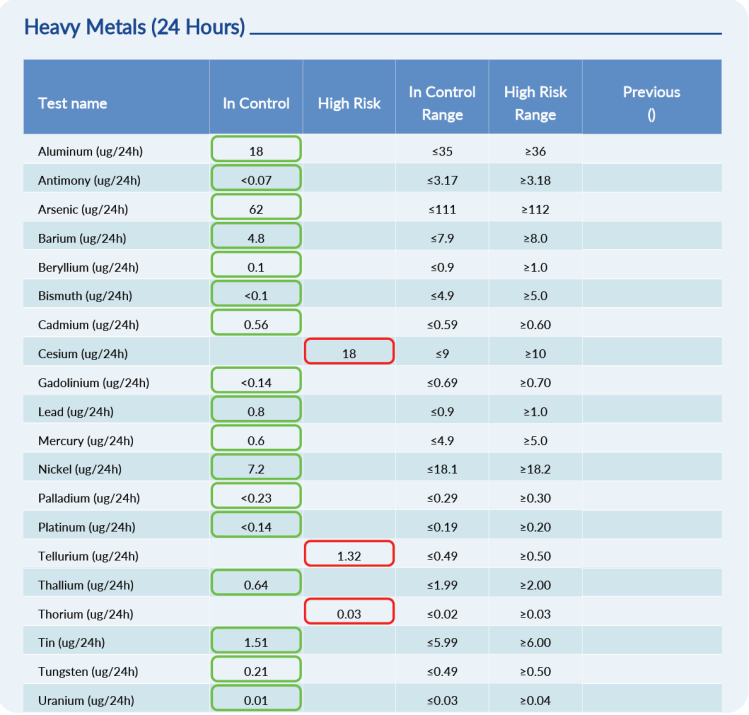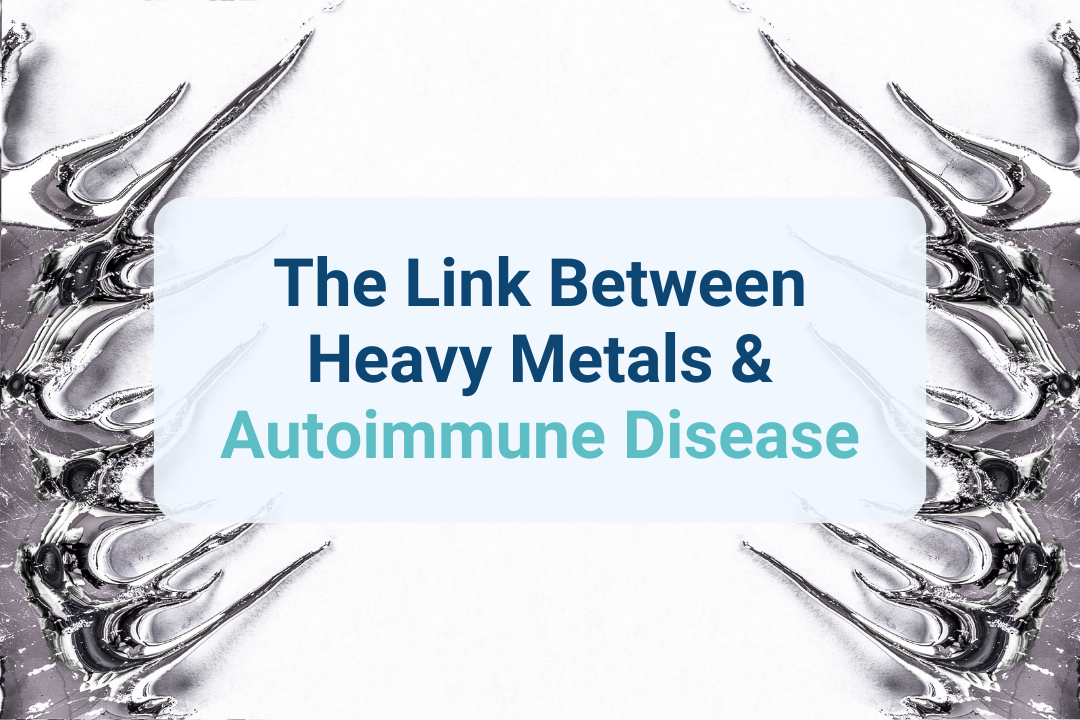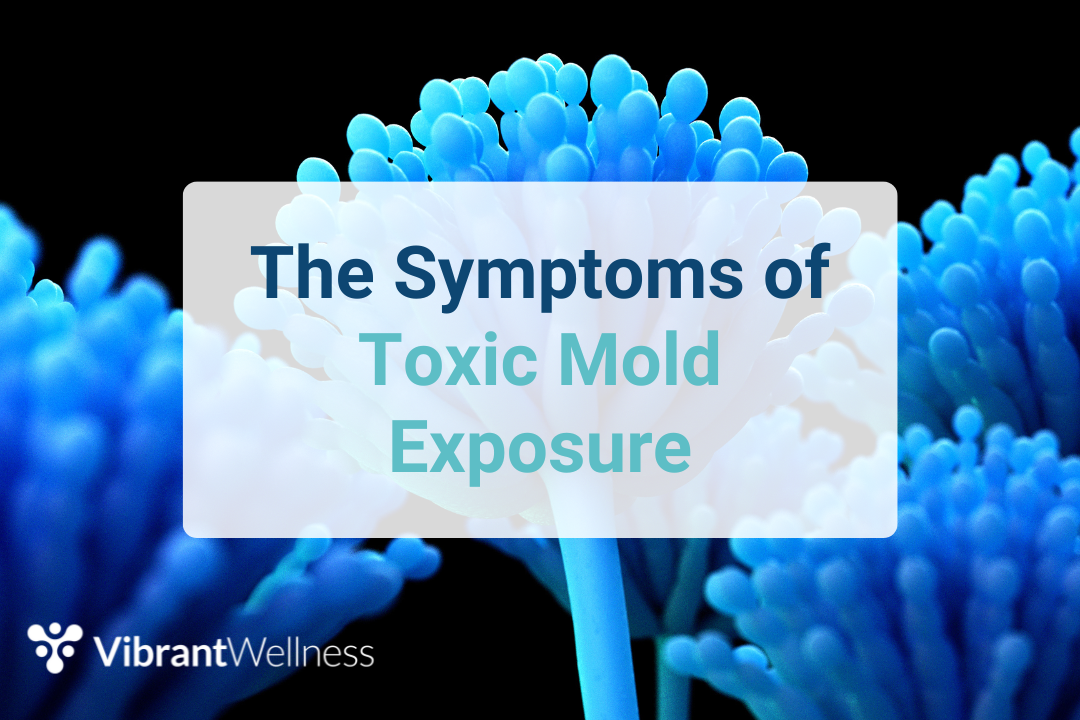How Heavy Metals Deplete Your Antioxidants
How do we get exposed to heavy metals?
Many people consider heavy metal exposure to be rare, but sources of exposure are actually quite common. [1]
Heavy metals are a class of toxic elements usually found in the following sources and materials [2]:
- Air pollution
- Polluted food (cattle, fish, pesticide-laden produce)
- Polluted groundwater/drinking water
- Prescription medicines, vaccines, contrast agents, dental work (amalgams/silver fillings)
- Jewelry
- Smelting industry
- Unfiltered industrial chimneys
- Rechargeable batteries
- Lead-based paint (commonly found in homes built before 1978)
- Outdated plumbing containing lead residue
- Improperly coated cookware
- Aluminum foil and aluminum containing products (health and beauty products)
- Mining
- Fuel production
- Munitions manufacturing and handling
- Nuclear energy production
How heavy metals cause oxidative stress
Oxidative stress is a state in the human body in which more free radicals are produced than antioxidants are to neutralize those free radicals. [3]
Free radicals are normal byproducts of cellular metabolism, toxic elements we absorb through our skin, lungs, or digestive tract, or excesses of molecules that can cause damage to our cell membranes or DNA.
When free radicals are present, normally we are able to bind them up with antioxidants we either make in our cells (glutathione) or get from our food (such as vitamins A, C, and E, or polyphenols like resveratrol and quercetin).
These antioxidants ‘grab’ the free radicals, which prevents them from binding to our cells, DNA, or other structures in the body, so they cannot cause damage, which results in inflammation.
If we do not have enough antioxidants present to bind all the free radicals present, then some free radicals will cause damage to our cells, DNA, and other structures in the body.
How heavy metals deplete antioxidants
When one is exposed to a heavy metal, a short, limited exposure will use up a large amount of antioxidants present, but once the exposure is over, antioxidants levels will gradually return to normal as the heavy metal is bound up and eliminated by the body through either the liver and kidneys, bound to bile and excreted with stool, or excreted through exocrine glands in the skin during sweating.

If, however, the heavy metal exposure persists, such as in the case of living in a house with lead paint, or working in a munitions plant where heavy metals such as mercury, cadmium, arsenic, chromium, or lead are handled, over time, the continued exposure to heavy metals in one’s environment will gradually overwhelm the antioxidants available in the body. [2]
When this happens, those antioxidants are also no longer available to aid the immune system in fighting common illnesses such as the cold or flu.
And, because there are now more heavy metals present than antioxidants available to neutralize them, those free heavy metals can bind to and cause damage to DNA, which can lead to greater incidence of cancers. [2]
Free heavy metals also frequently cross the blood-brain-barrier and cause damage to nerves and the myelin sheath around them, resulting in a variety of psychological and neurological inflammatory symptoms [4 ,2]such as:
- Balance problems
- Depression
- Anxiety
- Mental retardation
- Behavioral problems
- Tremors
- Numbness and tingling
- Neuropathy
- Cognitive decline
- Memory loss
- Pyschosis
- Autism
- Dyslexia
- Muscle weakness
- Paralysis
- Low IQ
- Irritability
- Vision problems
- Headaches
How do you test for heavy metals and antioxidant levels?

The good news is, if you or your healthcare provider suspect you have been exposed to one or more heavy metals, you can easily test your internal levels of these on Vibrant’s Heavy Metals test.
This test includes 20 of the most common heavy metals and metalloids:
- Beryllium
- Aluminum
- Nickel
- Arsenic
- Palladium
- Cadmium
- Antimony
- Tin
- Tellurium
- Cesium
- Barium
- Gadolinium
- Tungsten
- Platinum
- Mercury
- Lead
- Thallium
- Bismuth
- Thorium
- Uranium
In addition to testing for exposure to toxic heavy metals, you can also test your intra- and extracellular antioxidant levels on the Vibrant Micronutrients test.
This test is a one-of-a-kind test that measures levels of antioxidants and nutrients that will commonly be depleted during a heavy metal exposure.



References
1: CDC. 2019. National Report on Human Exposure to Environmental Chemicals. https://www.cdc.gov/exposurereport/index.html
2: Jaishankar, M., Tseten, T., Anbalagan, N., Mathew, B. B., & Beeregowda, K. N. (2014). Toxicity, mechanism and health effects of some heavy metals. Interdisciplinary toxicology, 7(2), 60–72. doi:10.2478/intox-2014-0009
3: Betteridge DJ. 2000. What is oxidative stress? Metabolism. 2000 Feb;49,2 Suppl 1):3-8. https://www.ncbi.nlm.nih.gov/pubmed/10693912
4: Clarkson T. W. (1987). Metal toxicity in the central nervous system. Environmental health perspectives, 75, 59–64. doi:10.1289/ehp.877559 NLM


